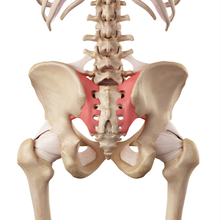Here's a sample of a Letter of Medical Necessity for Minimally Invasive SI (SacroIliac) Joint Fusion. This is not perfect, so it is important that your Provider will spend time to review the letter. Hopefully this helps. This sample medical necessity letter outlines the benefits of Minimally-Invasive SI Joint Fusion as a treatment for chronic low back pain. It includes detailed patient history, physical examination, and imaging results to support the request for prior authorization. Written in a professional tone, this letter provides a compelling case for the minimally invasive procedure and can serve as a helpful reference for healthcare providers seeking authorization from insurance companies. Sample Letter of Medical Necessity for Minimally Invasive SI Joint Fusion[Date] [Recipient's Name] [Insurance Company Name] [Address] [City, State, ZIP Code] Patient: [Patient's Full Name] Date of Birth: [DOB] Policy Number: [Policy Number] Group Number: [Group Number] Re: Medical Necessity for Minimally-Invasive SI Joint Procedure Procedure Code: [ CPT Code ] Diagnosis Code: [ DX Code ] Dear [Recipient's Name], I am writing to request pre-authorization for a minimally-invasive sacroiliac (SI) joint procedure for my patient, [Patient's Full Name]. As the rendering physician, I have been treating [Patient's Full Name] for chronic SI joint pain and dysfunction. This letter is intended to provide you with the relevant information about [his/her/their] condition and the rationale for the proposed procedure. History: [Patient's Full Name] has been experiencing persistent lower back and buttock pain for the past [number of months/years]. The pain is particularly aggravated by activities such as prolonged sitting, standing, and walking, which has severely limited [his/her/their] ability to perform daily activities and maintain a satisfactory quality of life. [Patient's Full Name] has also reported sleep disturbances due to the pain. Physical Examination: A thorough physical examination revealed localized tenderness and pain over the SI joint, positive FABER test, and positive compression test. These findings, in conjunction with the patient's history, are consistent with SI joint dysfunction. MRI and Imaging Results: An MRI scan was performed on [Date] and confirmed the presence of SI joint inflammation and degeneration. Additional imaging, including X-rays and CT scans, also revealed irregular joint surfaces and sclerosis, which are indicative of SI joint dysfunction. Failed Conservative Treatments: [Patient's Full Name] has undergone numerous conservative treatment options without adequate relief from the symptoms. These treatments have included but are not limited to:
Based on [Patient's Full Name]'s clinical history, physical examination findings, and imaging results, it is my medical opinion that a minimally-invasive SI joint procedure is medically necessary. This procedure has a high success rate in reducing pain and improving functionality for patients with SI joint dysfunction who have failed conservative treatments. Impact on Quality of Life: [Patient's Full Name]'s chronic SI joint pain has not only affected [his/her/their] physical well-being, but also [his/her/their] emotional and mental health. The persistent pain and limited mobility have led to social isolation, increased stress levels, and feelings of depression. This procedure is crucial to help [Patient's Full Name] regain [his/her/their] quality of life and prevent further deterioration of [his/her/their] overall well-being. Minimally-Invasive Procedure Benefits: The minimally-invasive SI joint procedure offers several advantages compared to traditional open surgery. These benefits include:
Economic Impact: It is also important to consider the economic impact of [Patient's Full Name]'s chronic SI joint pain. Due to the severity of [his/her/their] condition, [Patient's Full Name] has been unable to work and maintain a consistent income. Authorizing this procedure will likely enable [Patient's Full Name] to return to work sooner, reducing the financial burden on [him/her/them] and [his/her/their] family. Minimally Invasive SI Joint Surgery: Overview and Benefits: Minimally invasive sacroiliac (SI) joint surgery, also known as SI joint fusion or stabilization, is a cutting-edge procedure that aims to alleviate pain and restore function in patients suffering from chronic SI joint dysfunction. This innovative technique has emerged as a reliable and effective treatment option for patients who have not experienced adequate relief from conservative therapies. The sacroiliac joint is the connection between the sacrum (the triangular bone at the base of the spine) and the ilium (the large, wing-shaped bone that forms the pelvis). Dysfunction in the SI joint can lead to debilitating pain and reduced mobility. Minimally invasive SI joint surgery involves the use of specialized instruments and techniques to stabilize the affected joint, thus alleviating pain and allowing the patient to regain their quality of life. Benefits of Minimally Invasive SI Joint Surgery:
0 Comments
Your comment will be posted after it is approved.
Leave a Reply. |

ABOUT THE AUTHOR:
Ms. Pinky Maniri-Pescasio is the Founder of GoHealthcare Consulting. She is a National Speaker on Practice Reimbursement and a Physician Advocate. She has served the Medical Practice Industry for more than 25 years as a Professional Medical Practice Consultant. search hereArchives
July 2024
Categories
All
BROWSE HERE
All
|
- About
- Leadership
- Contact Us
- Testimonials
- READ OUR BLOG
-
Let's Meet in Person
- 2023 ORTHOPEDIC VALUE BASED CARE CONFERENCE
- 2023 AAOS Annual Meeting of the American Academy of Orthopaedic Surgeons
- 2023 ASIPP 25th Annual Meeting of the American Society of Interventional Pain Management
- 2023 Becker's 20th Annual Spine, Orthopedic & Pain Management-Driven ASC Conference
- 2023 FSIPP Annual Conference by FSIPP FSPMR Florida Society Of Interventional Pain Physicians
- 2023 New York and New Jersey Pain Medicine Symposium
- Frequently Asked Questions and Answers - GoHealthcare Practice Solutions
- Readers Questions
Photos from shixart1985 (CC BY 2.0), www.ilmicrofono.it, shixart1985




 RSS Feed
RSS Feed